Last updated on March 14, 2024
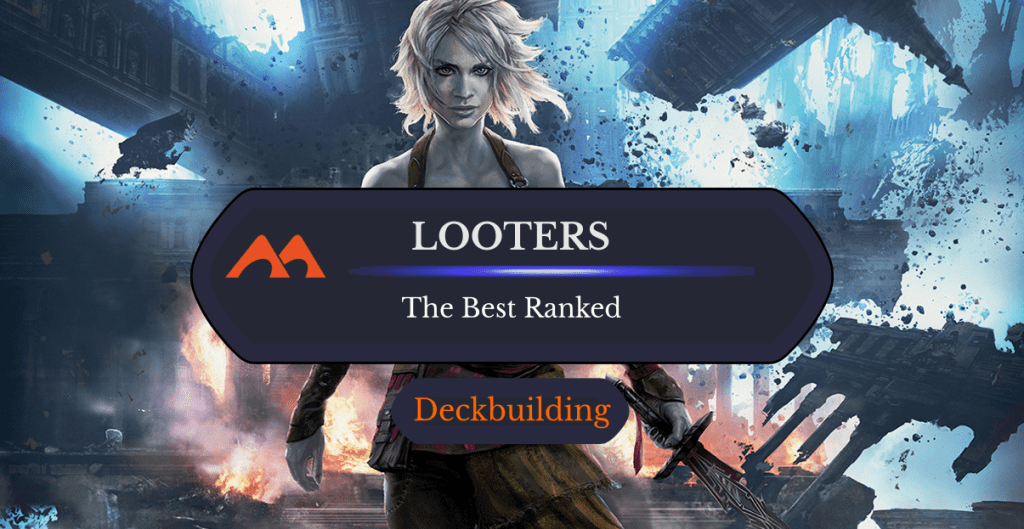
Nahiri, the Harbinger | Illustration by Aleksi Briclot
I’ve said it many times, but drawing cards is one of the best game actions you can take in Magic. It’s a game of resources, and accessing more cards than your opponent gives you more resources and options, which often translates into a high win percentage.
Looting, slang for drawing and discarding, isn’t quite as good as drawing a card, but it’s close and can even provide additional benefits beyond seeing an extra card. Looting is a mechanic that gives you more options and filters your draws, which helps you find the best threats and answers your deck can offer.
What Are Looters in MTG?
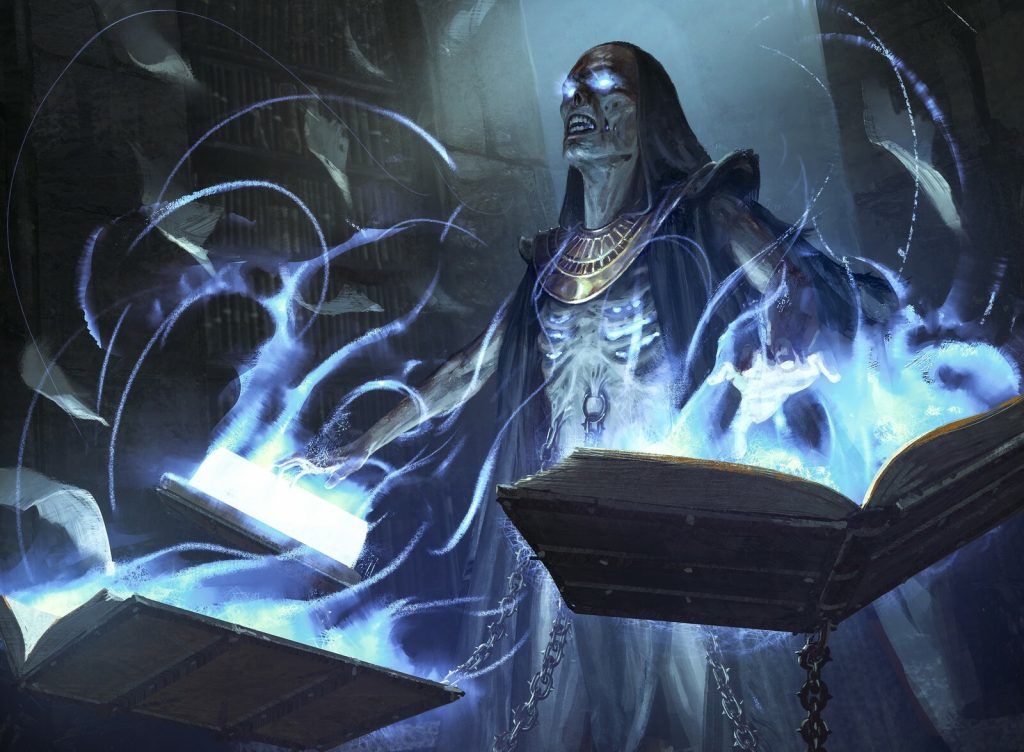
Tomebound Lich | Illustration by Cristi Balanescu
Looting in MTG is when you draw a card and then discard a card. This isn’t to be confused with rummaging, which lets you draw cards after discarding.
Like any mechanic that draws cards, looting is extremely powerful. Its namesake is the classic Merfolk Looter, but the mechanic comes in many different forms.
The ability to draw and discard a card offers invaluable card filtration. Seeing more cards than your opponents is an easy way to win a game. Looting helps filter extra lands or otherwise useless spells into impactful ones, but the discard element is just as useful for decks that want to fill their graveyard to fuel cards like Treasure Cruise or Unholy Heat.
A traditional looter allows you to draw one card and then discard a card. For this list, I’m stretching the definition a little to include cards that let you draw and discard one or more cards, like Rain of Revelation and Thirst for Knowledge. While these effects aren’t mechanically identical to looting, they share enough design space and utility that a deck interested in looting is likely interested in these cards. I've included some rummagers with the same logic.
#45. Desolate Lighthouse
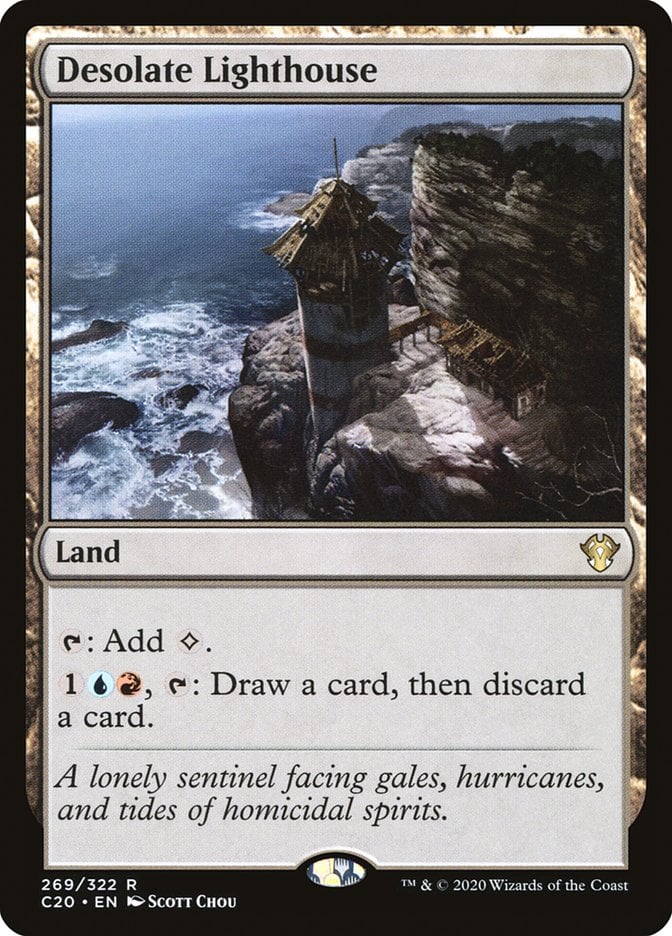
I’m a big fan of getting your lands to do more work than fixing, but Desolate Lighthouse is too slow for my tastes. That said, having a land that produces mana and does another thing is always good, especially since this helps sort through late-game junk.
#44. Transplant Theorist
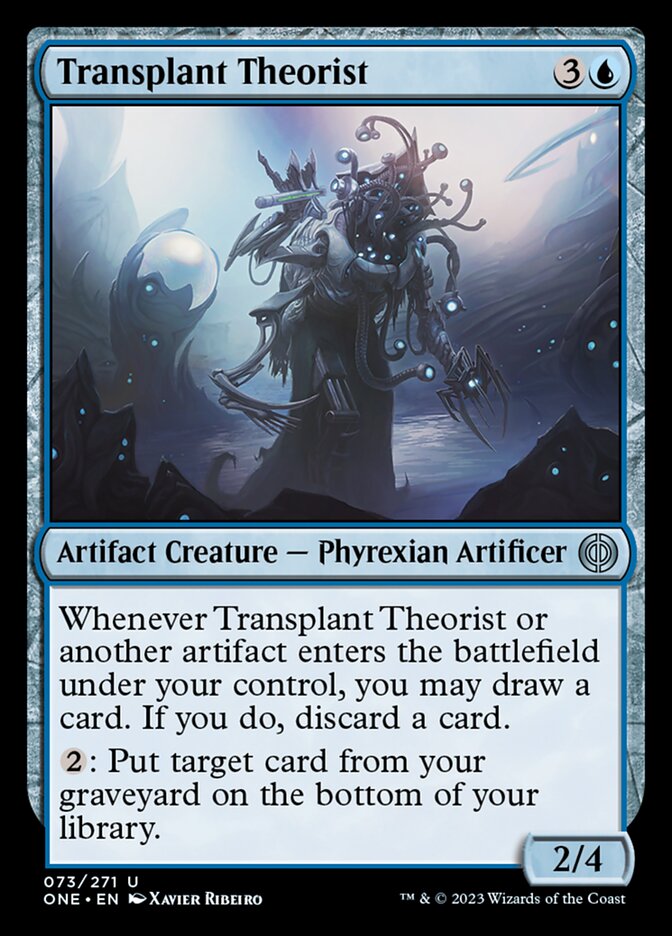
Transplant Theorist offers the artifact-heavy deck a way to see many extra cards. This card is interesting alongside loops with cards like Dockside Extortionist that produce infinite Treasure, allowing you to draw (and discard) your deck.
#43. Merfolk Looter

The classic! The namesake! Despite its place in MTG history, Merfolk Looter is slow by today’s standards, but it's still worthy of a spot in lower-powered Cubes and casual EDH lists.
#42. Tomebound Lich
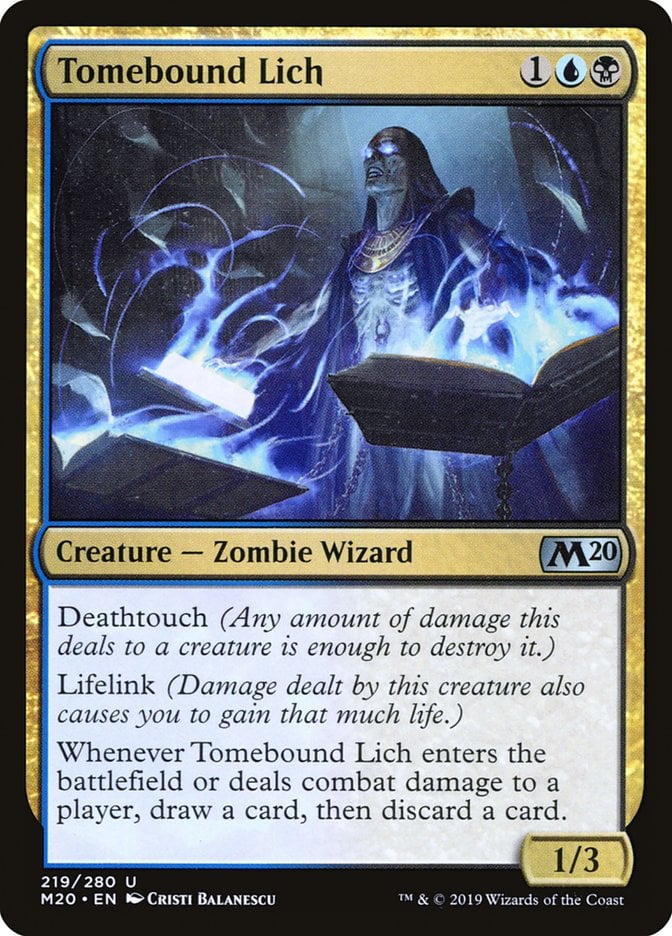
The combination of deathtouch and lifelink is spicy on Tomebound Lich. Deathtouch is very relevant to help the Lich deal combat damage. It’s not the most reliable source of consistent looting, but having zombie synergies is a nice touch.
#41. Geier Reach Sanitarium
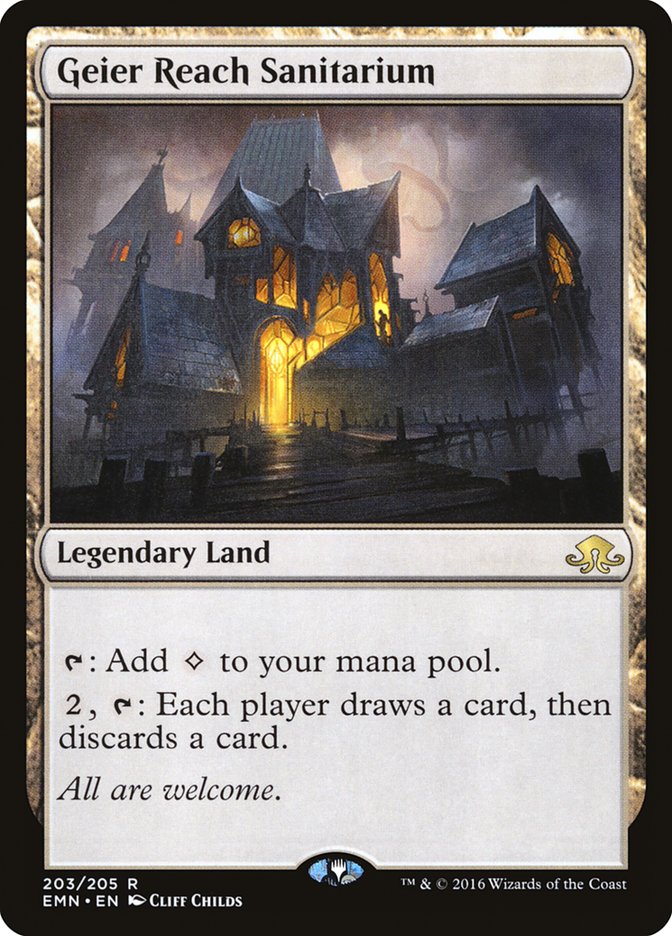
Geier Reach Sanitarium is more cost-effective than Desolate Lighthouse, so I like it a fair bit more. Letting your opponents loot can be detrimental, but cards like Orcish Bowmasters or Faerie Mastermind can wring some value from the forced draw.
#40. Enclave Cryptologist
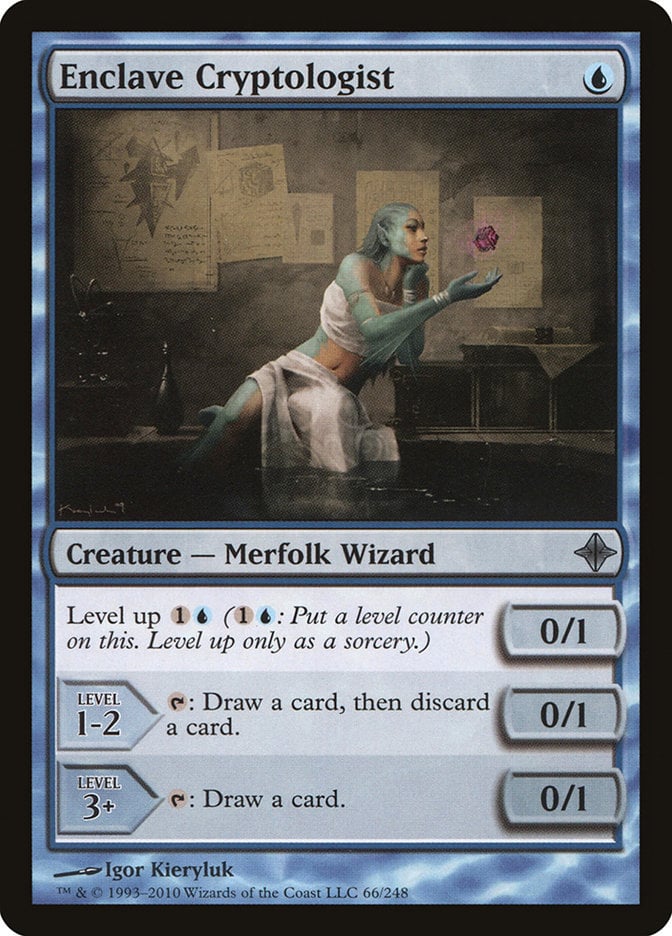
If you invest enough mana in Enclave Cryptologist, you can go from a creature that loots to a creature producing raw card advantage. I’m not sure I want to invest mana into such a fragile body, though this card plays well with proliferate effects.
#39. Oath of Jace

Seeing three fresh cards is a lot, making Oath of Jace a valuable source of filtration for superfriends decks and potentially enchantress decks. At sorcery speed, it does little else for it to be useful to other strategies.
#38. Occult Epiphany
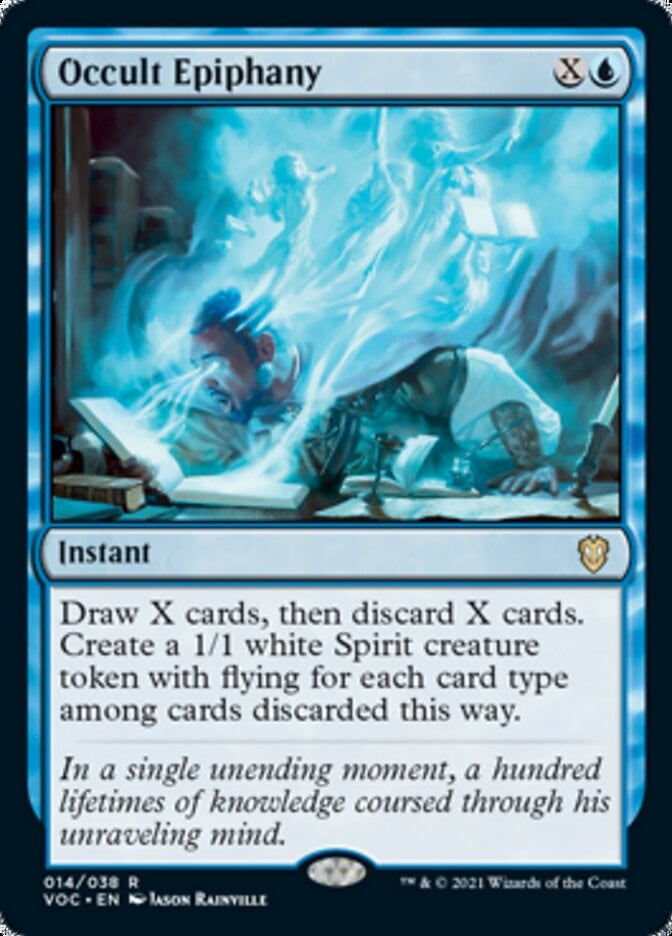
Occult Epiphany offers a looting mana sink on a stick—or several twigs? This is expensive and requires careful deck building to ensure you have diverse card types to discard.
#37. Narset of the Ancient Way
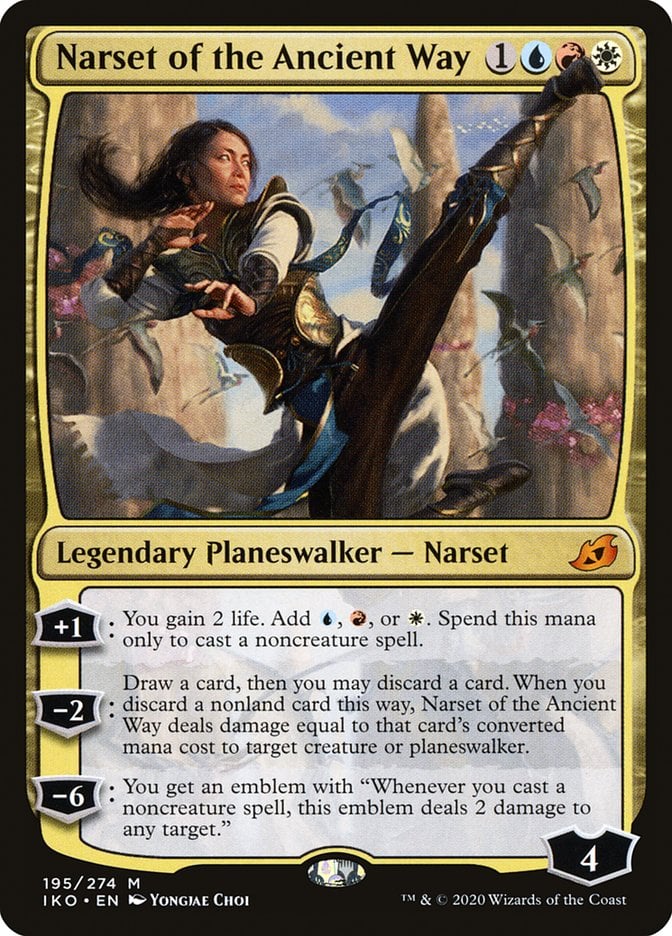
Narset of the Ancient Way might not be the strongest planeswalker, but its loot ability can be useful. There’s always the downside of not wanting to discard a spell to kill something since the best use of looting tends to be filtering through excess lands, but having more options is rarely bad.
#36. Looter il-Kor

Looter il-Kor isn’t the card it used to be due to power creep, but it’s still a consistent source of card advantage. Shadow practically reads as unblockable, which enables cards like Fallen Shinobi and Professional Face-Breaker.
#35. Champion of Wits

I love Champion of Wits dearly. It’s just so much lovely value, from the double loot on ETB to the card advantage eternalizing it offers. It’s great in decks that care about looting often; it enables the strategy and acts as a payoff since you’re never sad about discarding the Champion to eternalize later.
#34. Matzalantli, the Great Door / The Core
Matzalantli, the Great Door is a fantastic looting option for a deck that’s not in blue, the color with the greatest number of looters. That said, you need a permanent-heavy graveyard deck to get the most out of the descend abilities, so this may secretly be a card.
#33. Jace, Cunning Castaway
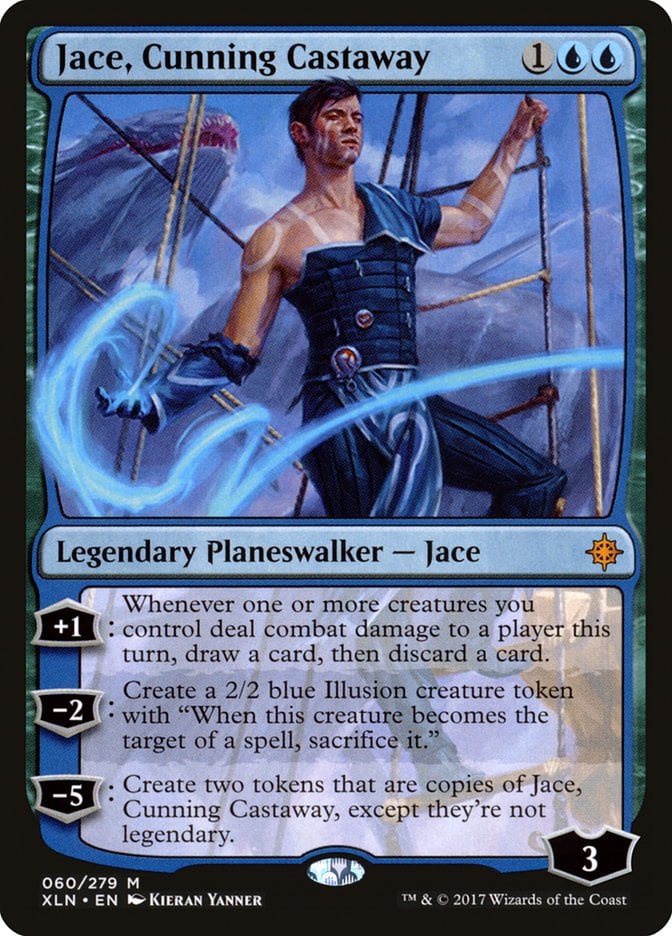
Jace, Cunning Castaway promises tons of looting for a proactive deck, though its other abilities are weak. This planeswalker is best alongside something like The Locust God that generates tons of tokens.
#32. Azor’s Gateway / Sanctum of the Sun
Exiling the cards you don’t want with Azor's Gateway can be a significant downside for decks relying on looting to fill the graveyard with resources, but decks interested in drawing and filtering don’t care about exile versus discard. The reward of a land that taps for a silly amount of mana is worth it.
#31. Obsessive Stitcher
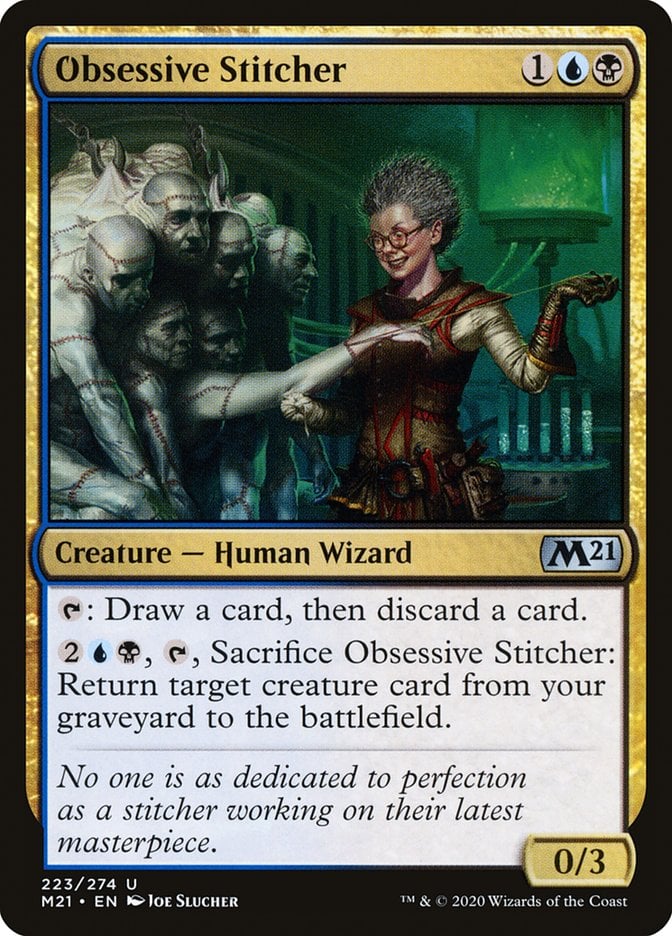
Reanimation is a strategy that loves looting to get its big creatures in the bin, making Obsessive Stitcher a lovely unit. It’s an enabler and payoff in one package, even if it’s a touch slow.
#30. Anvil of Bogardan

Anvil of Bogardan essentially makes every player loot at the beginning of their draw steps, which can be valuable. For decks interested in forcing their opponents to draw, this card is a less detrimental Howling Mine as it doesn’t generate pure card advantage and plays well with cards like Sheoldred, the Apocalypse and Narset, Parter of Veils.
#29. Likeness Looter
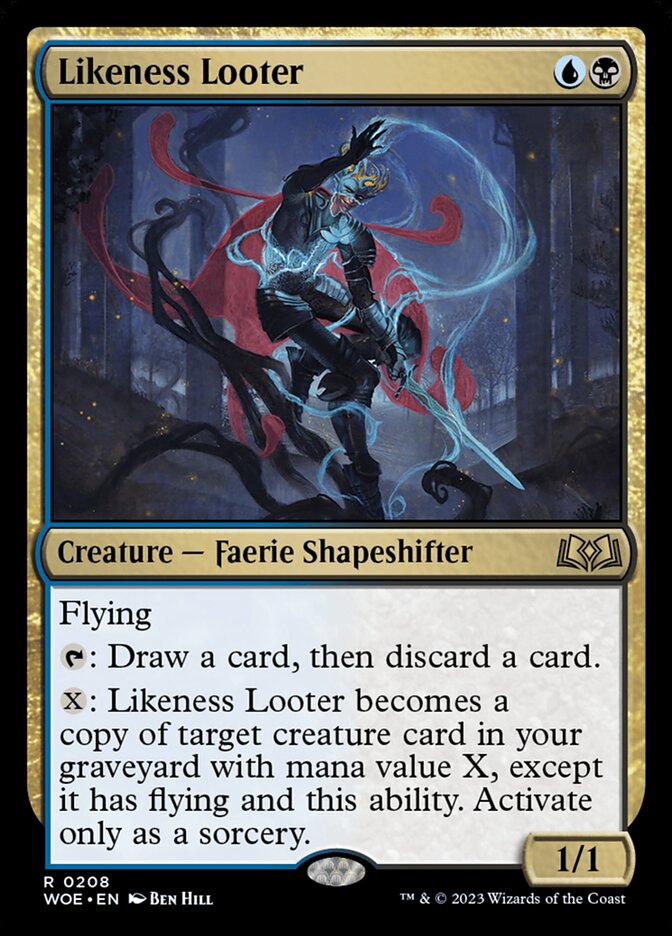
Likeness Looter is a nice little unit that uses the cards it discards. This could be a cute way to enable attack triggers off cards like Etali, Primal Storm without worrying about summoning sickness.
#28. Rain of Revelation

Rain of Revelation is on the expensive side but offers a robust burst of card advantage. Holding this up alongside countermagic leaves you with plenty of good options.
#27. Suspicious Stowaway / Seafaring Werewolf
A glow-up for Looter il-Kor, Suspicious Stowaway can do a lot of work. Once it becomes night, the Seafaring Werewolf represents a real clock.
#26. Careful Consideration
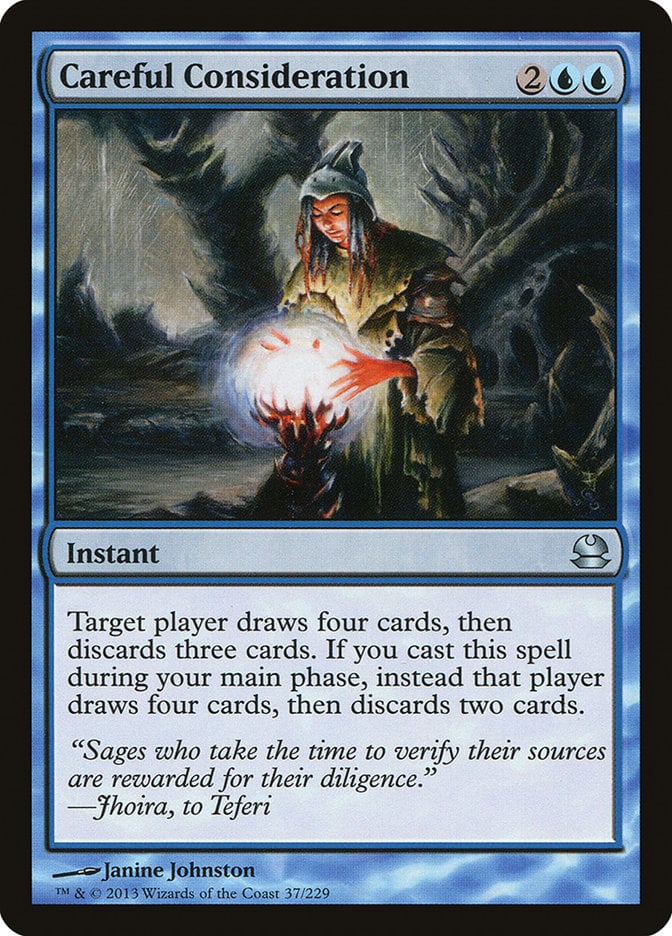
Looting is all about options, and Careful Consideration gives you plenty. It’s generally best to cast it on your turn, but the flexibility of playing it on your opponent’s turn is nice, and you’ll have plenty of options to discard since you see four new cards for 4 mana.
#25. Burning Inquiry
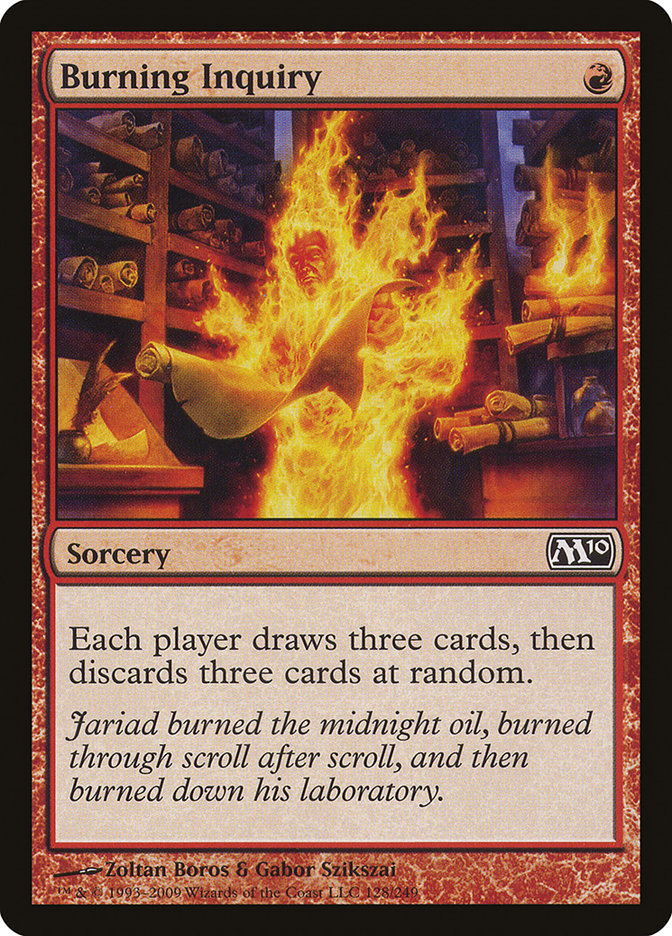
The power of looting is the option to consider what you want to discard. Burning Inquiry robs you of that choice, but it’s still got a use. Triggering cards that care about you drawing cards three times and putting four cards into the graveyard for is incredibly efficient for decks that care about those things.
#24. Bitter Reunion
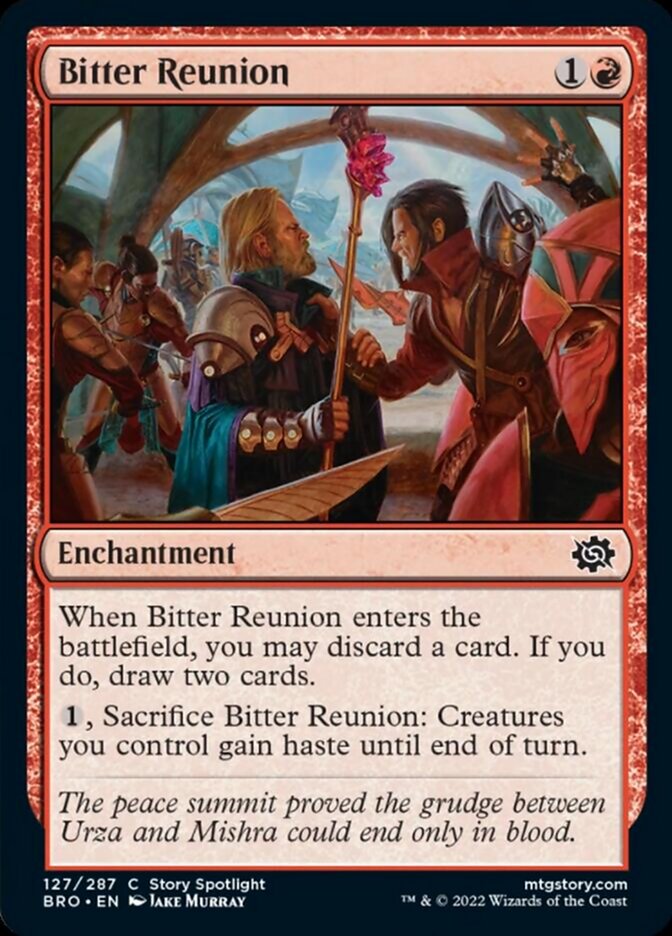
Bitter Reunion is great in many scenarios but excels in reanimation strategies that use it to pitch their reanimation target, then crack it to give that creature haste. Many aggressive decks can find some use for this.
#23. Malcolm, Alluring Scoundrel

Malcolm, Alluring Scoundrel offers a steady source of cheap looting and the potential to cast some spells. You don’t often get to the fourth chorus counter, but the threat forces your opponent to answer Malcolm.
#22. Rona, Herald of Invasion / Rona, Tolarian Obliterator
Looters that untap themselves can offer repeated value. In the case of Rona, Herald of Invasion, that becomes an infinite combo outlet alongside cards like Mox Amber and Retraction Helix. Once you’re finished looting, it flips into a dangerous threat.
#21. Nahiri, the Harbinger
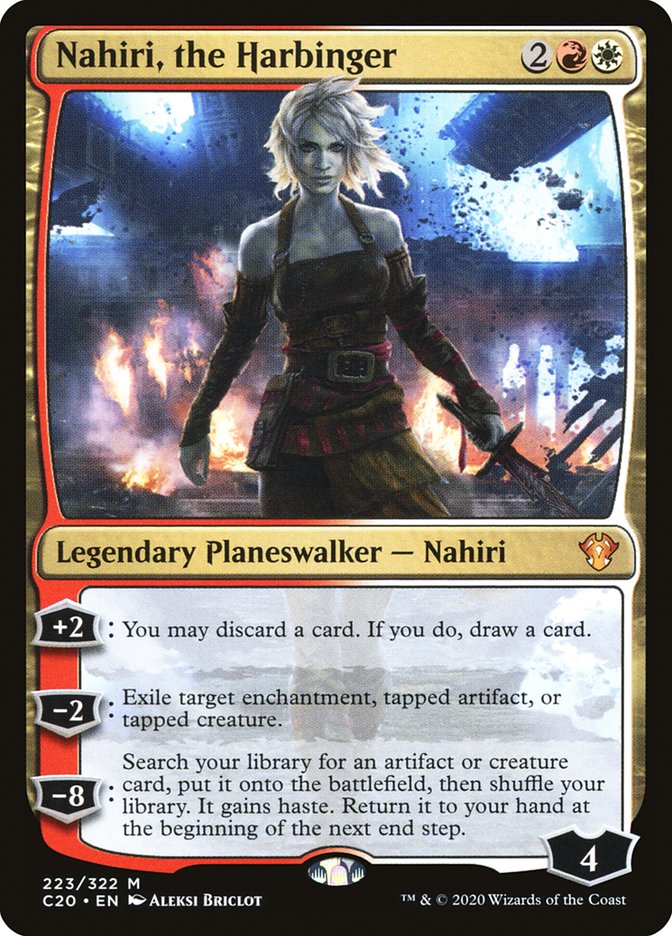
A Cube staple, Nahiri, the Harbinger offers a great source of looting and much more. The choice between a looter and a removal spell is powerful. Getting to the ultimate often means winning the game with cards like Emrakul, the Aeons Torn.
#20. Moon-Circuit Hacker
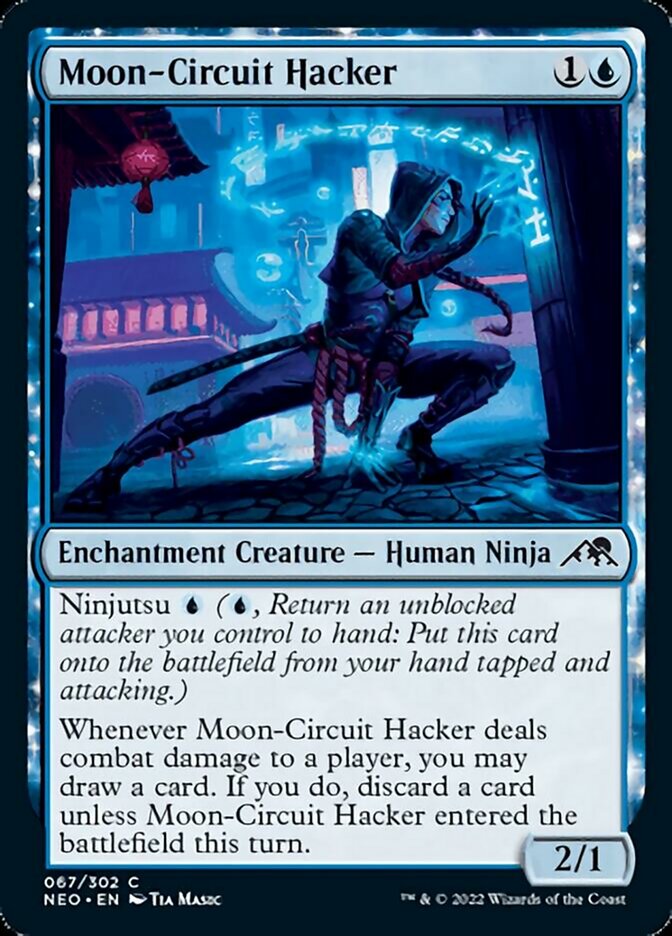
Moon-Circuit Hacker isn’t quite Ninja of the Deep Hours, but it’s respectable enough to be copies five and six in many Pauper lists. Getting a card, then repeated loots, is plenty of value from a creature you’re often paying for.
#19. Seasoned Pyromancer
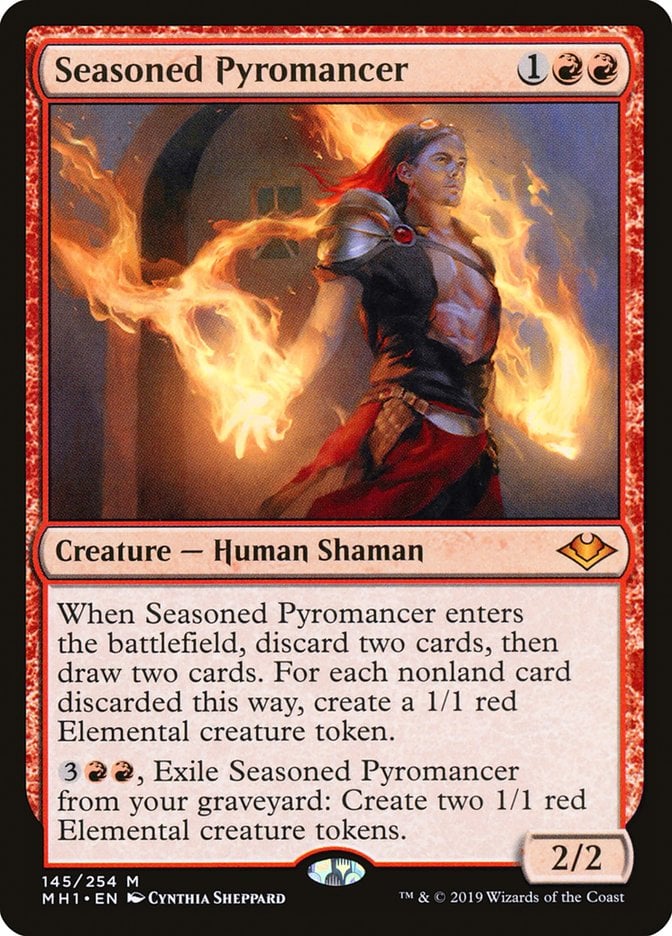
Seasoned Pyromancer does a lot for a mere 3 mana. The best-case scenario is casting it with an empty hand, so you actually just draw cards, but getting to filter lands or generate some tokens is amazing.
#18. Anje Falkenrath
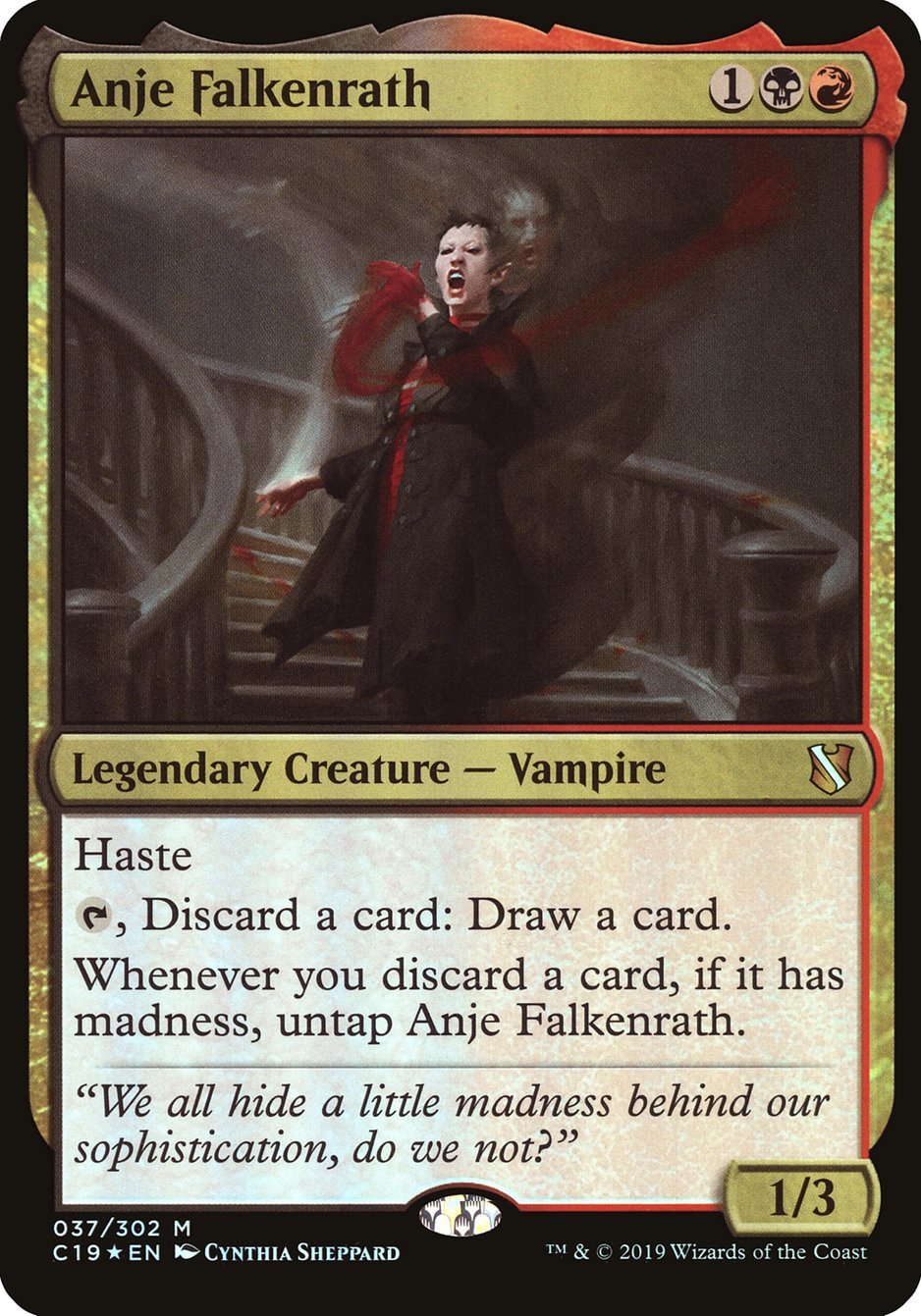
Anje Falkenrath is the premier madness commander, for good reason. The value is absurd! Combo-oriented decks can rip through their list, and even fair decks will find plenty of card advantage and cost reduction from this vampire.
#17. Compulsive Research

Options, options! Compulsive Research is a very versatile spell that can loot multiple spells in the graveyard and functions as a source of card advantage depending on what you need.
#16. Lord Windgrace

Lord Windgrace boasts a lot of power. It’s a fantastic commander for landfall decks, discarding lands before returning them to the battlefield with its second ability. Drawing cards and making land drops are two of the best game actions you can take in MTG, so getting both in one planeswalker makes a commander worth building around.
#15. Raffine, Scheming Seer

Conniving is looting with extra steps and rewards, so it’s fair to add Raffine, Scheming Seer to this list. A major player in Standard, Raffine promises to keep the gas flowing while buffing your best creatures.
#14. Chart a Course

Chart a Course is at its best in aggressive decks capable of making it a 2-mana Divination, but it’s perfectly fine in any strategy that can utilize the graveyard. Chart a Course isn't flashy, but this card has an incredibly high floor.
#13. Kaito Shizuki
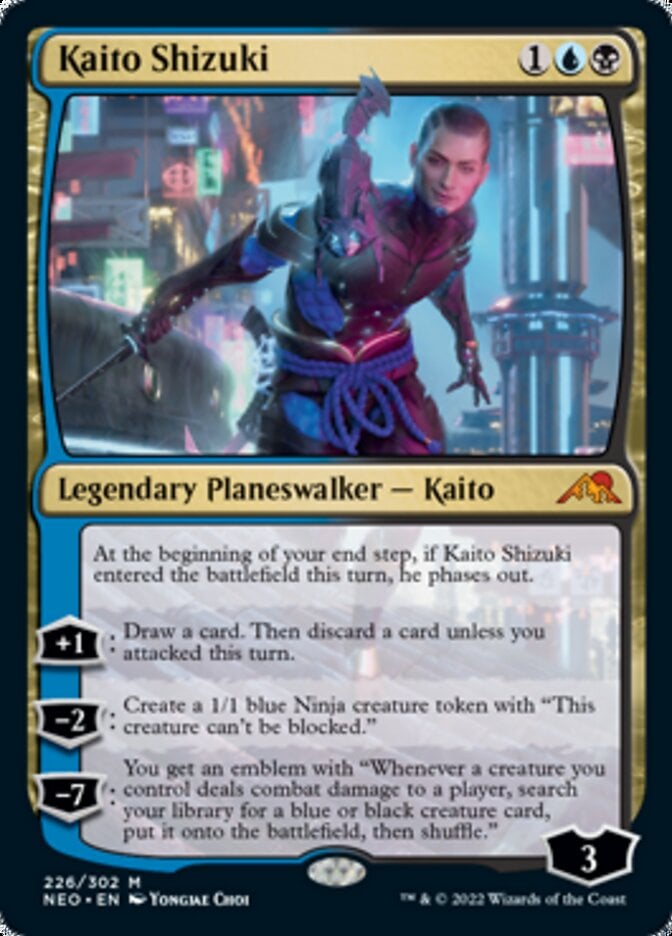
Another Standard player, Kaito Shizuki offers a lot of value. Its +1 can be card advantage instead of filtration, and its second ability pressures planeswalkers and enables the first. Altogether a very powerful planeswalker, even if it’ll rarely win you the game.
#12. Jeskai Ascendancy
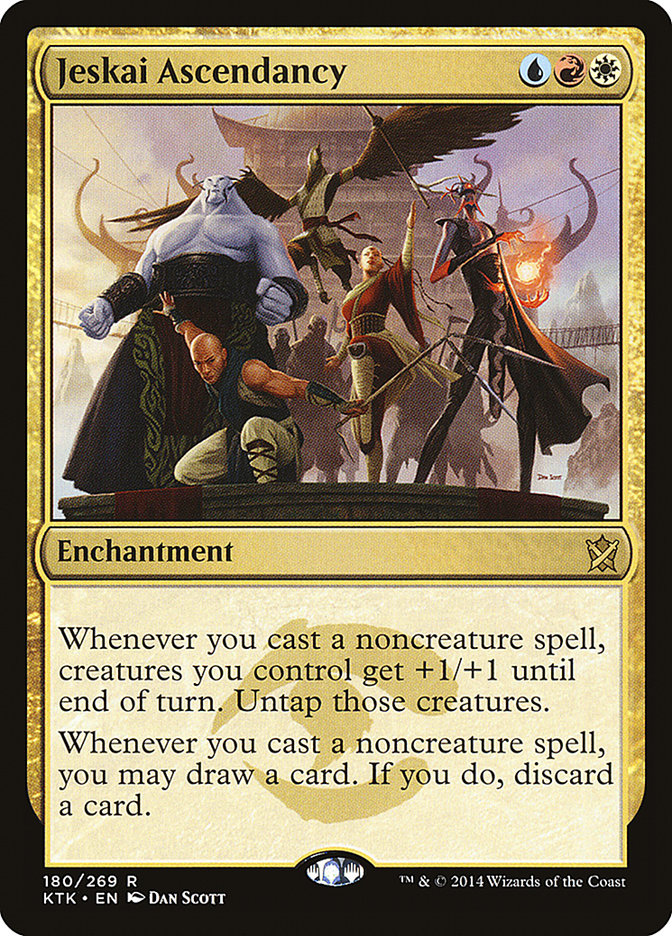
Jeskai Ascendancy is a great example of using looting as a powerful draw engine. This card’s heyday in Modern has passed, but it’s still a potent source of card draw many Commander decks can leverage.
#11. Dack Fayden
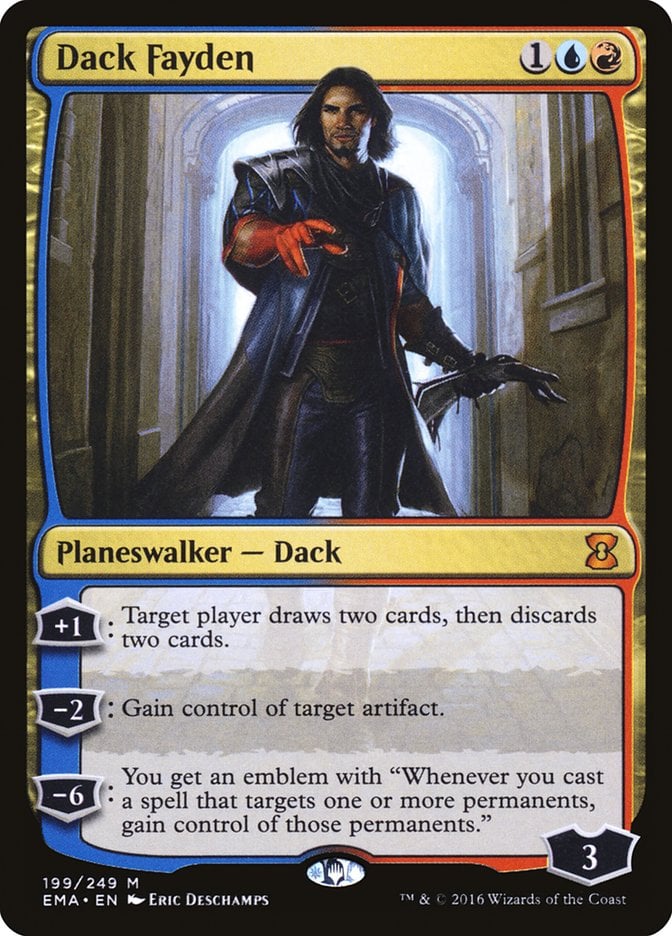
The greatest thief in the Multiverse can steal much more than artifacts. Dack Fayden’s uptick swipes the secrets right out of your library! Getting to target your opponents can help political negotiations in EDH or work alongside cards like Hullbreacher and Narset, Parter of Veils in Cube.
#10. Teferi, Master of Time

Teferi, Master of Time is a beast in Commander. Getting four loots each turn cycle tears through your deck and stuffs your graveyard with material. It doesn’t take long to get that ultimate, which easily twists a game in your favor.
#9. Frantic Search

As a mana-neutral spell, Frantic Search is at its best in combo decks wanting to rack up a storm count or see as many cards for as little mana as possible. It’s best paired with lands that tap for multiple mana, either naturally or because of a card like High Tide.
#8. Cathartic Reunion

Cathartic Reunion most commonly appears in Dredge decks because you can discard Stinkweed Imp and friends as the cost, then dredge them with the draw. This is vulnerable to countermagic, but the risk is worth the reward in many unfair strategies.
#7. Prismari Command

Prismari Command is an amazing card. Thanks to its various modes, you’re rarely sad to see it at any point in a game you can cast it. It's very efficient as a looter, with the Treasure creation helping cast the spells you dig to or the two removal modes buying time to make the card selection stronger.
#6. Thirst Cycle
The three Thirsts—Thirst for Knowledge, Thirst for Meaning, and Thirst for Discovery—are all powerful draw spells. Thirst for Discovery is the strongest, but all of these are playable in any deck with enough cards of the relevant type to discard.
#5. Jace, Vryn’s Prodigy / Jace, Telepath Unbound
Jace, Vryn's Prodigy is fantastic in most grindy blue decks. The card selection gives you plenty of fuel for the early and midgame, followed by Jace, Telepath Unbound providing the card advantage needed to turn the corner. This card plays especially well with extra turn spells.
#4. Territorial Kazu

The combination of fetch lands and triomes makes it trivial for Territorial Kavu to be a 2-mana 5/5 every game. That’s a lot of pressure for 2 mana, made stronger by the repeated rummages helping dig you towards relevant spells.
#3. Faithless Looting + Careful Study
Faithless Looting and its blue counterpart, Careful Study, are best in decks that care about filling their graveyard. They’re card disadvantage, at least on the first cast, but binning two spells for 1 mana is amazingly efficient, especially with graveyard-based strategies revolving around mechanics like dredge and cards like Arclight Phoenix.
#2. Fable of the Mirror-Breaker / Reflection of Kiki-Jiki
One of the strongest cards printed in recent years, Fable of the Mirror-Breaker does much more than rummage away a few cards. The card filtration is backed by potent mana production from the Goblin Shaman token, and Reflection of Kiki-Jiki is a powerful value engine that quickly becomes a win condition. All this for 3 mana is incredible.
#1. Smuggler’s Copter

A frequent flier on Constructed ban lists, Smuggler's Copter presents a devastating clock as a 3/3 flier that dodges sorcery-speed removal. The looting pushes this card over the top. Applying pressure is useless if you can’t back it up, and the repeated loots make it harder to stall out after putting on an aggressive front. But the most busted aspect is that all this comes from a colorless card, so it can be leveraged by any deck with a handful of cheap creatures.
Best Looter Payoffs
Looting is comprised of two actions: drawing and discarding. Each part is exploitable.
First up, the draw. There are tons of cards that trigger off drawing two cards in a turn, like Faerie Vandal and Minn, Wily Illusionist. Looters are great ways to enable these effects on your turn.
Plenty of cards also reward you for drawing cards at all. The Locust God and Niv-Mizzet, Parun are two powerful commanders that reward you for any number of cards drawn on any turn that are more than happy to play alongside all the looters you can throw at them.
As for the discard, mechanics like madness care about discarding cards. Discarding also fuels many graveyard strategies. It’s an easy way to fill the bin for cards that care about having a mass of cards in the graveyard, like delve spells or cards with delirium.
Because you have so much control over what you’re discarding, they’re also useful for strategies that care about getting certain cards in the graveyard. These effects are fantastic at enabling strategies like Dredge and Reanimator that want to see many cards and need to fill the graveyard with resources.
Is Looting Good in MTG?
Looting is excellent in Magic. The more cards you see in a game, the more likely you are to win because seeing more cards gives you more resources and options than your opponent. Even though looting doesn’t produce card advantage since you draw and discard a card, the card filtration is amazing. If you’re looting every turn, you get twice as many looks at a relevant card than an opponent reliant on their draw step.
Discarding a card is also much stronger than it looks. For some decks, you’ll just be discarding irrelevant lands or spells too expensive to cast, but with some of the payoffs above, you can turn the discard of a loot effect into a game action as valuable as drawing an additional card.
To maximize the impact of your looting, try to hold some lands in hand. Most decks don’t need more than five or six lands, so holding the extras ensures you always have some discard fodder for your looters.
What Is The Difference Between Looting and Rummaging?
The difference between looting and rummaging is the order of operations. When you loot, you draw a card, then discard a card. When you rummage, you discard a card and then draw a card. While the difference seems inconsequential, it matters greatly.
When you loot, you have perfect information regarding your hand. Let’s say the card you draw is a Reanimate; you know now that the ideal card to discard is Archon of Cruelty to make use of the card you drew.
Rummaging happens with imperfect information. You don’t know if you’re going to draw the Reanimate, so you need to carefully consider if it’s worth discarding the Archon and exposing it to graveyard hate without knowing when the reanimation spell is coming.
Looting is always stronger than rummaging, but the ability to see new cards is always valuable. There are plenty of powerful rummagers like Fable of the Mirror-Breaker and Bitter Reunion that show just how powerful the mechanic can be.
Wrap Up
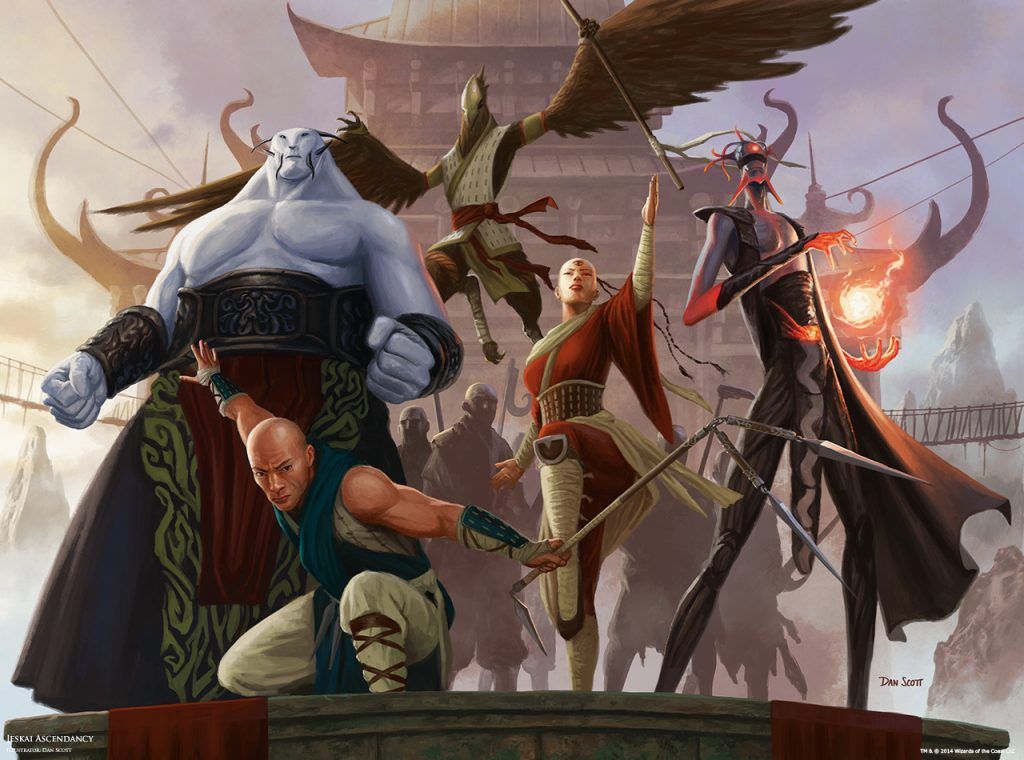
Jeskai Ascendancy | Illustration by Dan Scott
Any mechanic in Magic that shows you extra cards is at least a little good. Not only does looting allow you to see more of your deck, but discarding cards can often be used to generate additional advantage. From setting up graveyard-based strategies to filtering away excess lands, looting is a versatile mechanic many decks happily employ.
What’s your favorite looter? Do you prefer looting or rummaging? Let me know in the comments and on the Draftsim Discord!
Stay safe, and keep looting (cards)!
Follow Draftsim for awesome articles and set updates:


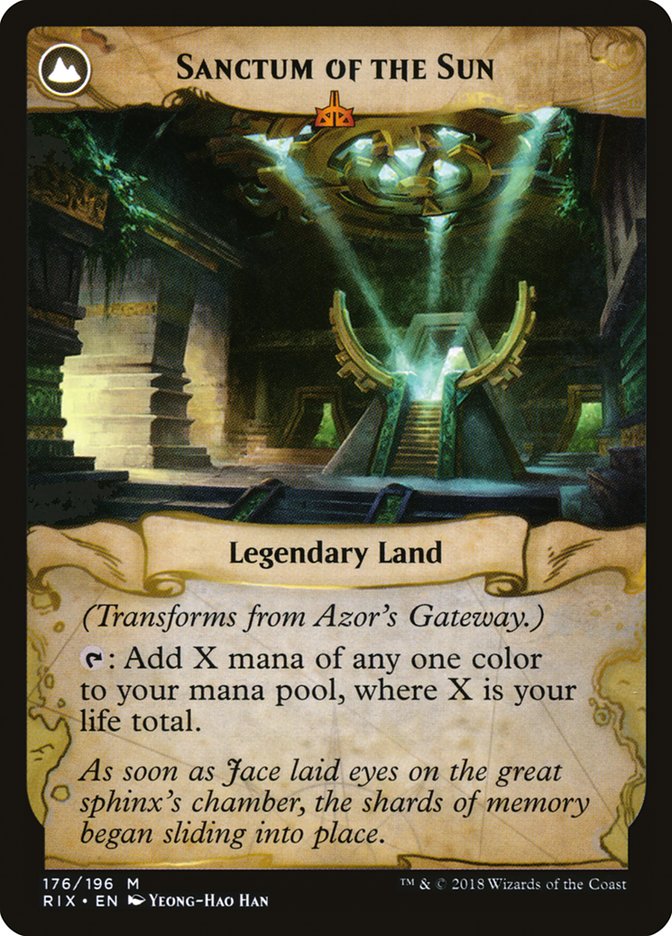


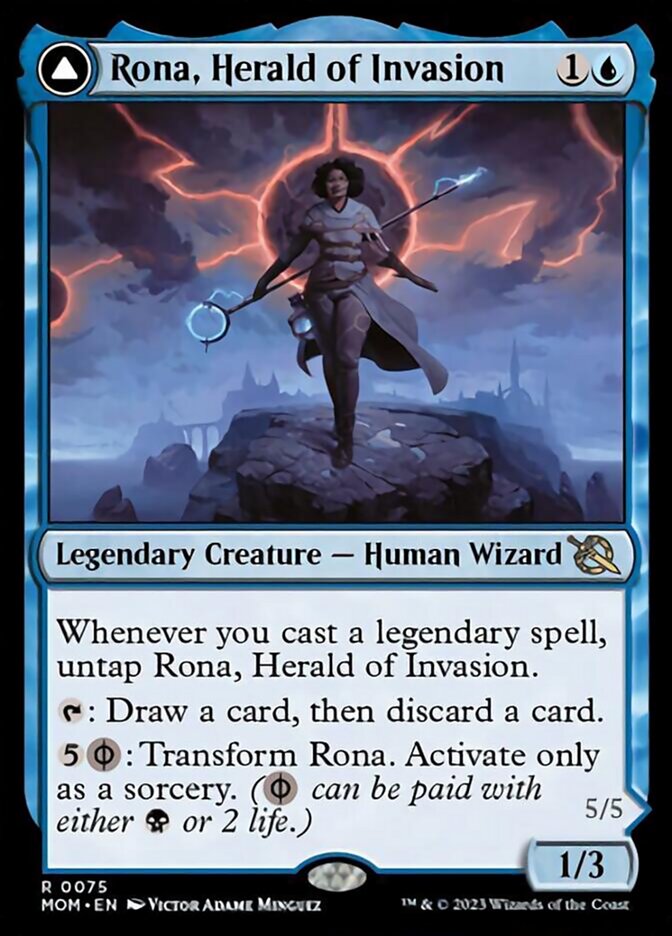

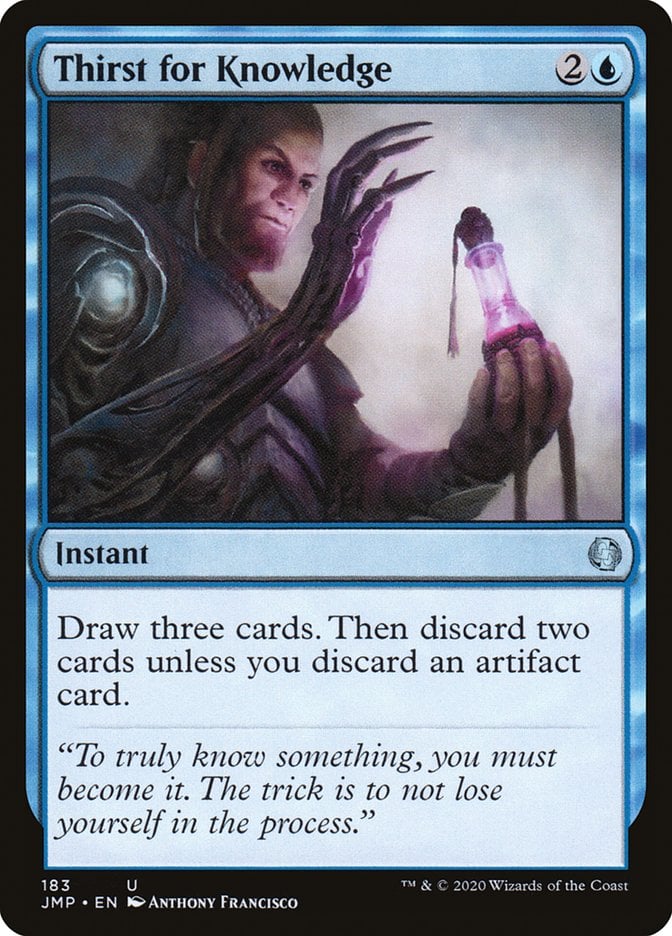
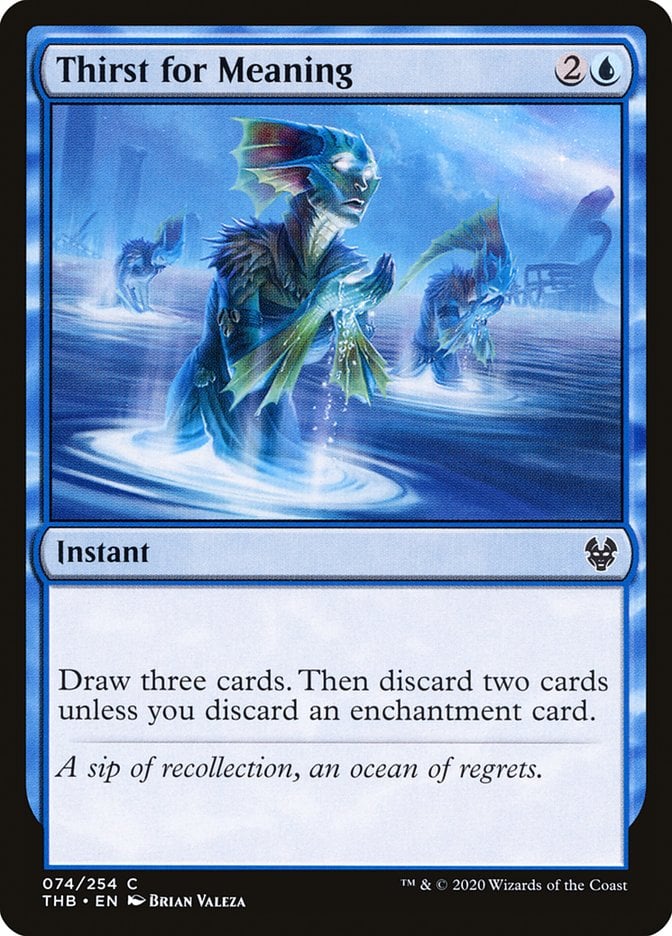

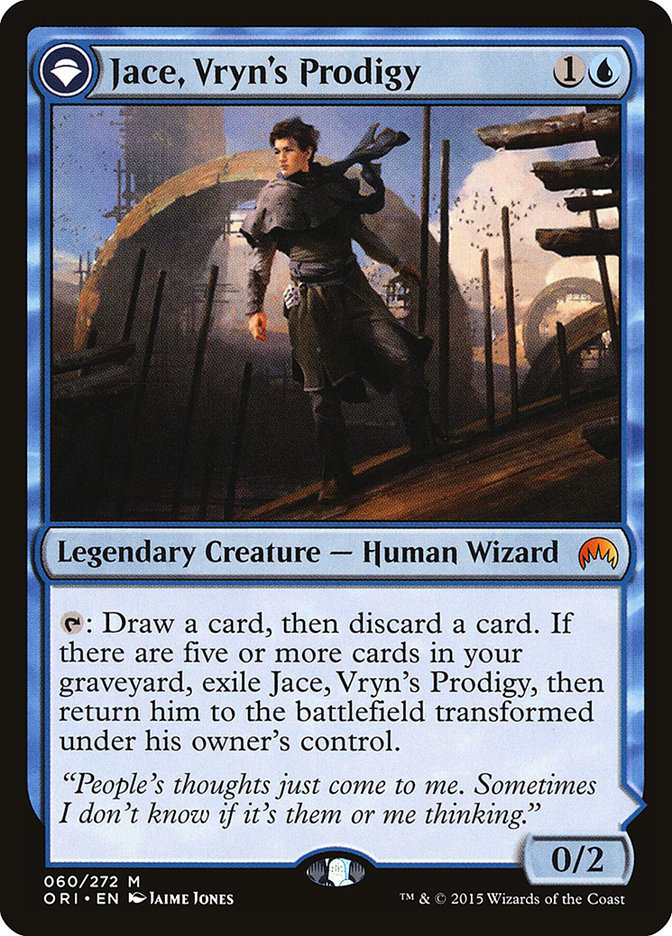

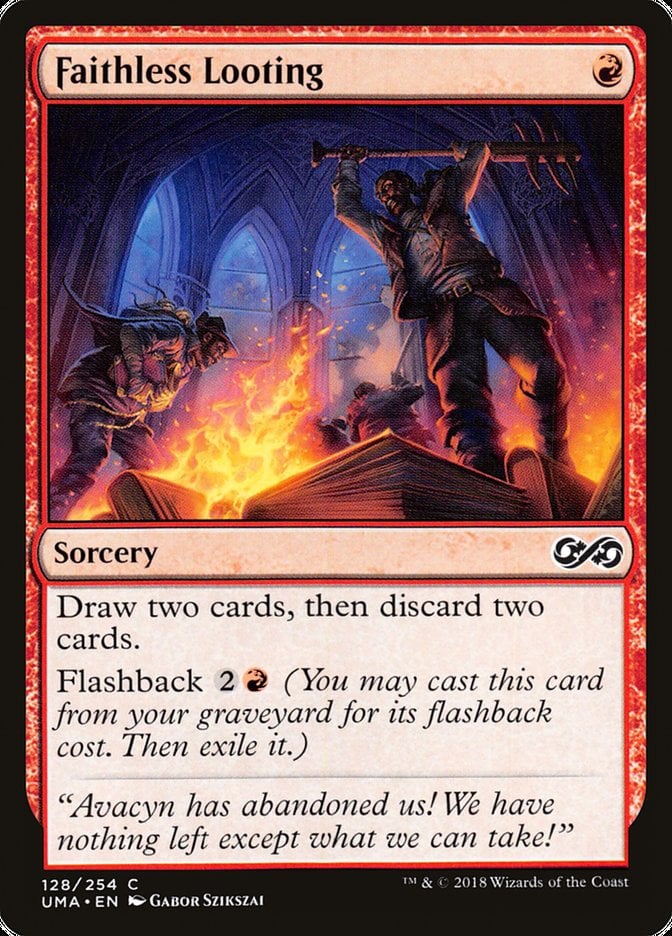
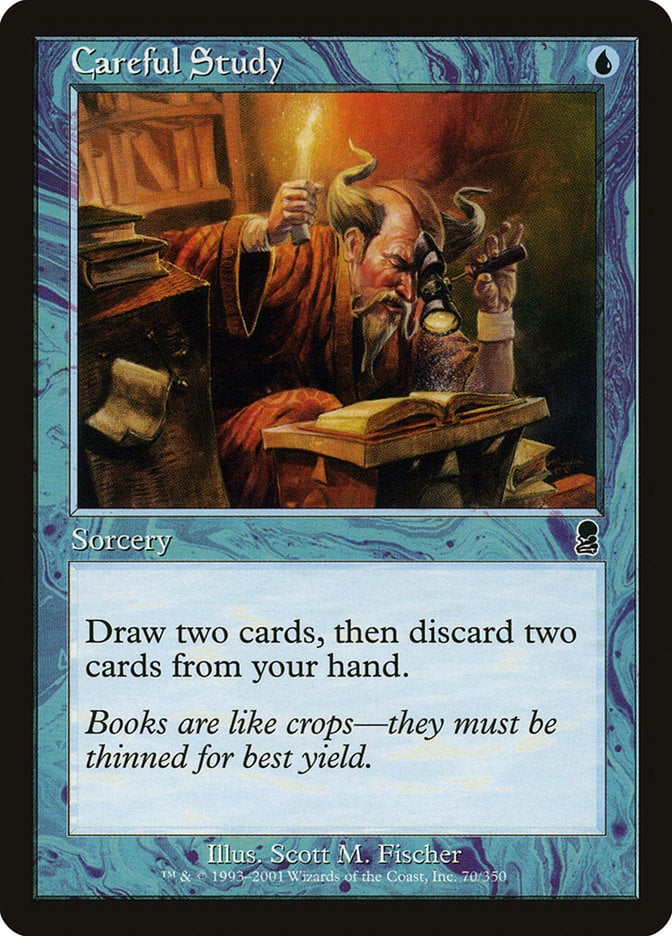
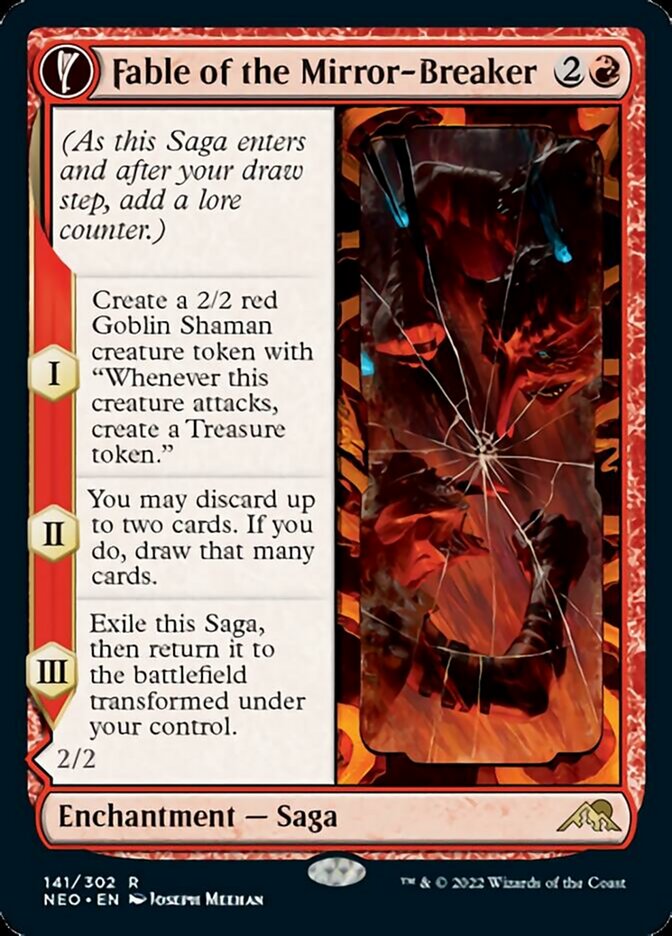

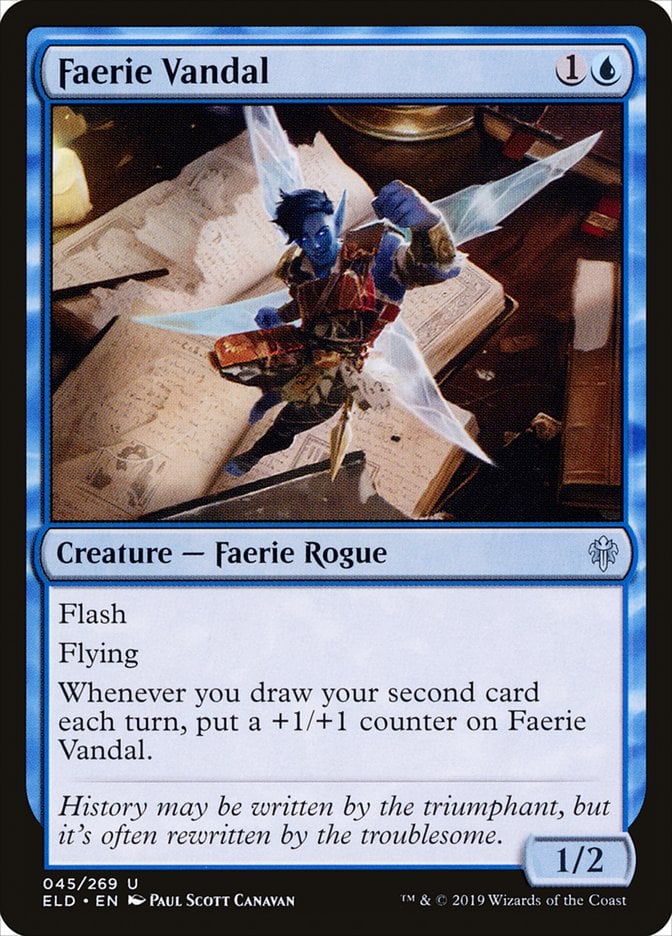
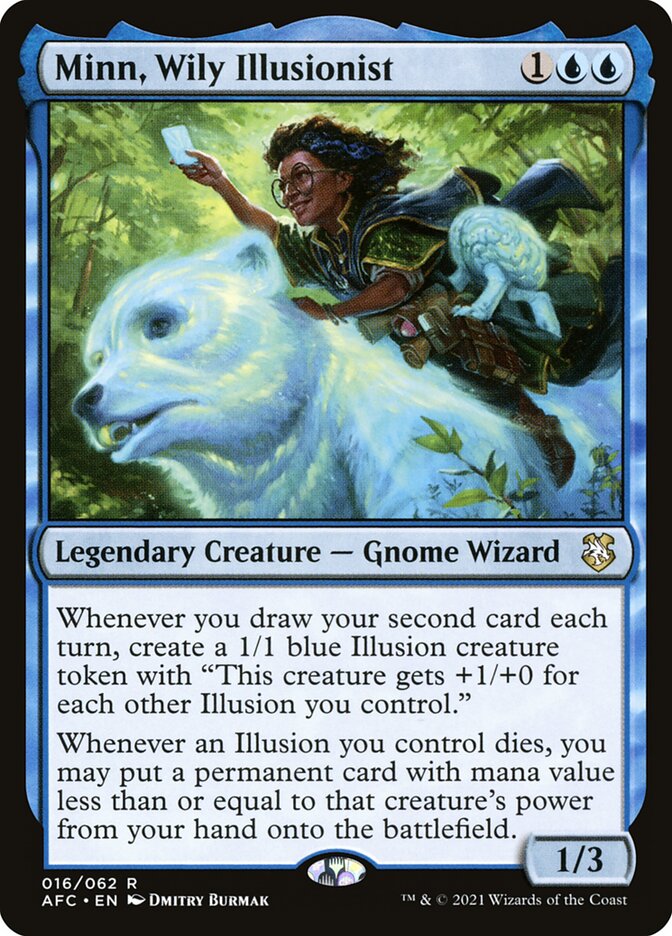
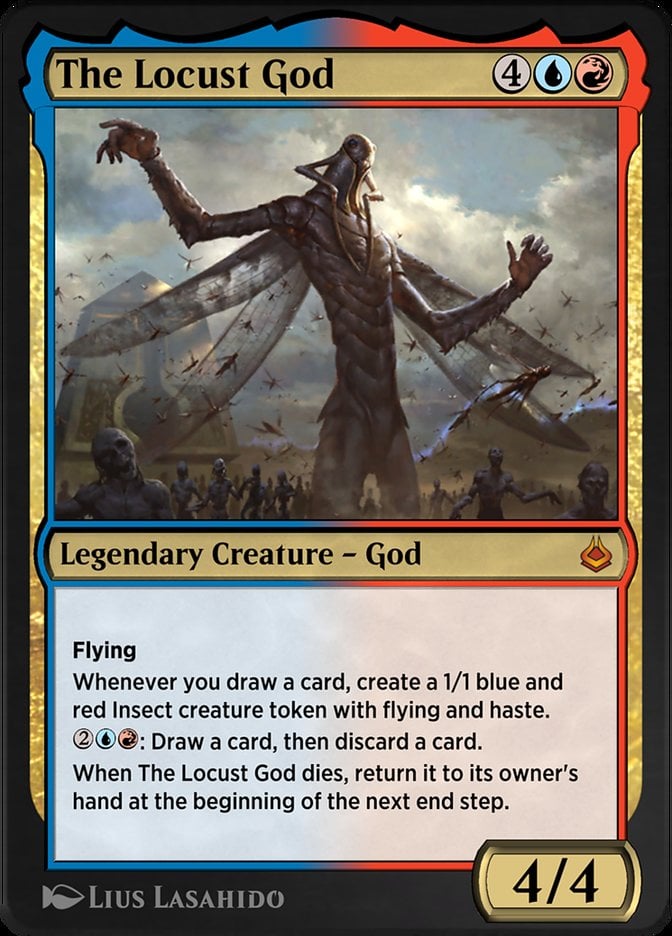
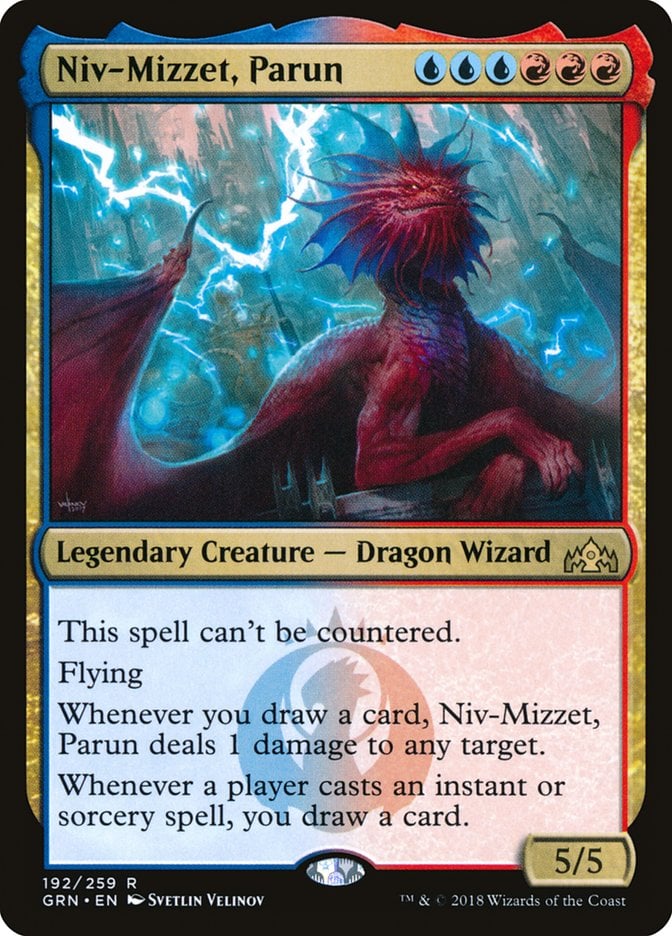
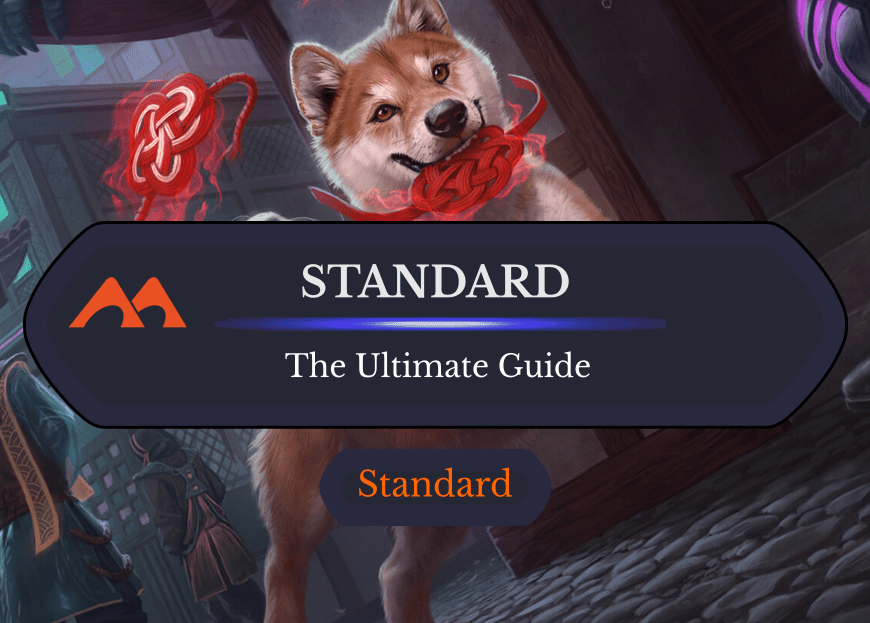

Add Comment